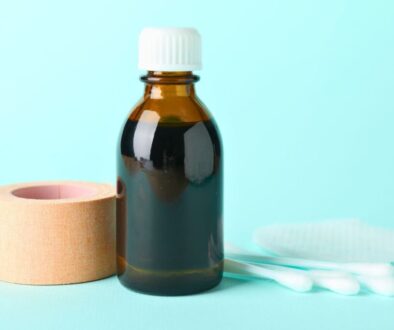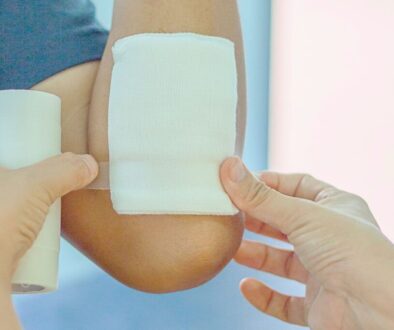Wound Healing Innovations In 2025
Chronic wounds affect millions worldwide, driven by aging populations, diabetes, and other conditions. But the future of healing is already here. Wound healing innovations are transforming tissue repair. Numerous high-end therapies and bioengineered materials are speeding up regeneration. They offer new hope for meeting this crucial medical need.
In this article, we’ll explore the latest wound healing innovations. These advancements are set to revolutionize patient care. Discover how science enables faster, more effective recovery.
Introduction To Wound Healing Innovations
Innovations in wound care have never been more critical. Chronic wounds, like diabetic foot ulcers, affect millions worldwide. They’re difficult to treat and come with high costs. Healing often takes a considerable amount of time, which increases the risk of infection. These issues harm patients and financially strain healthcare systems.
Recent breakthroughs offer promising solutions. These include advanced cellular therapies and advanced dressings. They aim to accelerate healing and enhance safety. These advancements also provide more personalized care, addressing challenges with precision and accuracy.
Why Wound Healing Matters Today
Chronic wounds are a growing global issue. Conditions such as diabetes and vascular disease are significant contributors. These wounds can last for years and need repeated treatments. The costs add up to billions in healthcare expenses each year.
Treatments for severe cases include surgeries, prolonged antibiotics, or amputations. Traditional care focuses on maintaining a supportive wound environment. Next-generation regenerative solutions offer a promising way to tackle these challenges.

From Traditional Wound Care To Advanced Solutions
For decades, wound care has focused on cleaning, dressing, and preventing infection. This approach works but has limits. It doesn’t address inflammation, detect infections early, or support tissue regeneration. New technologies are changing this. They enhance healing at every stage. This leads to better outcomes and lessens the impact of chronic wounds worldwide.
Emerging Molecular And Cellular Therapies In Wound Care
Molecular and cell-based therapies are revolutionizing wound care with personalized, targeted treatments. These advanced approaches surpass traditional dressings by actively accelerating healing and reducing scarring.
Targeting Growth Factors And Inflammasomes
Advanced therapies are now targeting growth factors, such as Transforming Growth Factor Beta (TGF-β) and Epidermal Growth Factor (EGF). These factors help speed up tissue repair and minimize adverse remodeling. TGF‑β, for example, is crucial for scar tissue management. It regulates fibroblast activity to control the formation of scarring.
Therapies targeting inflammasomes are making progress. These protein complexes are activated during injury and inflammation. The treatments fine-tune immune responses to promote repair while reducing damage.
MicroRNAs And Gene-Based Innovations
Gene-based approaches are transforming chronic wound care through advances in molecular biology. MicroRNAs (miRNAs) regulate gene expression during tissue repair and regeneration. They show potential for improving healing and reducing complications, such as scarring or infections. These small molecules could revolutionize wound healing at the genetic level.
Revolutionary Stem Cell Therapies
Stem cells are an exciting area in regenerative medicine. Mesenchymal stem cells (MSCs) show high potential for tissue regeneration and the control of inflammation. Developments such as induced pluripotent stem cells (iPSCs) and exosome-based therapies are pushing the boundaries of medical advancements. These advancements are opening up even more possibilities.
Exosomes are small-sized vesicles secreted by stem cells. They offer precise, cell-free solutions for wound repair. For diabetic foot ulcers, MSC-derived exosomes show impressive results. They enhance vascularisation, reduce inflammation, and promote skin tissue regeneration.
Advanced Biomaterials And Smart Dressings
Innovative biomaterials are changing wound dressings. They include active healing components and responsive technologies. These advancements help speed up recovery.
Interactive Dressings
Hydrogels, nanogels, and microparticles are revolutionizing wound care. These advanced dressings do more than protect wounds. They provide sustained therapeutic benefits. They release growth factors, regulate hydration, and manage pH levels. This creates ideal conditions for faster and more effective healing.
Biosensor-enabled dressings are raising the bar in wound monitoring. They monitor factors like moisture, pressure, and bacteria. These dressings provide real-time data. This enables medical professionals to make faster, more informed decisions.
Meanwhile, theranostic dressings deliver treatment while also providing diagnostic data. They allow for on-demand monitoring of changes in a wound’s biochemical state.
Transparent And Responsive Materials
Imagine a dressing that changes color to signal an infection. Transparent materials with built-in detection capabilities help clinicians identify issues more quickly. They reduce the need for frequent changes. This saves time, lowers risk, and improves patient outcomes.
Amniotic-Tissue Allograft Dressings
Amniotic allografts from DonorCure provide a biologically active extracellular matrix. They’re enriched with growth factors, cytokines, and structural proteins to accelerate the healing process. These allografts help reduce inflammation, promote tissue regeneration, and lower the risk of infection.
Bioelectrics And Energy-Based Modalities
Bioelectronics and energy-based therapies are transforming wound care. These innovations offer non-invasive solutions. They also help speed up healing.
Electrical & Electroceutical Therapies
Wearable devices, such as electrical patches and electroceutical sutures, are transforming wound care. They use electric fields to stimulate cellular growth. This helps tissues regenerate more quickly and wounds close faster. By targeting cellular growth pathways, these technologies are a powerful tool for modern healing.
Cold Plasma & Phototherapy Treatments
Cold plasma therapy disinfects wounds without causing heat damage. Phototherapy uses light to improve oxygenation and boost cellular energy. These treatments work well for tough cases like diabetic ulcers and infected wounds. Traditional methods often fail in these situations.
Oxygen-Centric Solutions
Chronic wounds with low oxygen levels (hypoxia) can benefit from new treatments. Techniques like Negative Pressure Wound Therapy (NPWT) and topical oxygen delivery are showing promise. They support tissue growth and provide oxygen for cell repair. These methods are effective for treating large or non-healing wounds.
Regenerative Manufacturing Technologies
Advancements in manufacturing are transforming the production of bioengineered skin and scaffolds. These innovations enable breakthrough regenerative solutions.
3D Bioprinting & Personalized Skin Grafts
3D bioprinting has advanced to the point where it can create customized skin grafts. These grafts closely mimic a patient’s tissue in both structure and function. The process involves layering cells, growth factors, and bioactive components in precise patterns. This approach promotes wound healing and lowers the risk of rejection.
ECM-Based Scaffolds & Dermal Substitutes
Extracellular matrix (ECM)-based scaffolds are vital in regenerative medicine. They act as building blocks for tissue growth. These scaffolds work as dermal substitutes. They provide a framework for cell attachment, vascularization, and tissue integration. This helps repair damaged skin effectively.
Nanotechnology In Wound Healing
Nanotechnology is transforming wound care. It delivers therapies with precision and improves healing outcomes.
Advanced Nanotherapeutic Delivery
Innovative nanomaterials, including nanoparticles, nanogels, and liposomes, offer precise drug delivery. These platforms target treatment directly at the site of the infection. This reduces systemic side effects compared to traditional medications.
Cutting-Edge Nanofibers And Nanodiamond Silk Dressings
Silk protein nanofibers enhanced with nanodiamonds are revolutionizing wound dressings. These materials protect against infection and promote cell adhesion. They break down naturally, so there’s no need for removal. This fusion of nanotechnology and biomaterials sets a new standard for wound care.
Frequently Asked Questions
What qualifies as a wound healing innovation?
Innovations in wound care focus on cellular regeneration and the reduction of inflammation. Advanced technologies, such as biosensors and molecular therapies, enhance delivery methods.
Does insurance cover smart dressings?
Insurance coverage for smart dressings depends on your provider and location. Many of these advanced wound care solutions are now recognized for their cost-effectiveness. They help prevent complications.
How do I choose between biomaterials, electronics, or cellular therapies?
The choice depends on the type of wound, your health, and your doctor’s advice. Chronic wounds often respond to cellular therapies. Less severe wounds may benefit from adaptive biomaterials.

Redefining Recovery: The Breakthrough Era Of Wound Healing
Wound care is evolving, paving the way for more precise and effective treatments. These advanced wound healing innovations offer new hope to patients with slow-healing or complex wounds. They address the physical challenges of wound care. They also reduce the emotional and financial strain of long treatments.
Discover how DonorCure’s amniotic tissue allografts are transforming wound care. These regenerative solutions promote faster healing. Learn more at DonorCure.
Heal Ulcers, Burns, & Surgery Wounds With Break-Through Amniotic Allograft Treatments
Experience the future of wound care with our advanced amniotic allograft treatments. Say goodbye to slow healing. Our innovative solutions promote faster recovery from pressure wounds, ulcers, burns, and surgical wounds. Trust the power of science for your healing journey. Regain your comfort and health today! See if you are eligible for treatment here.

About The Author
Corinne Grace is a full-time writer living in the Philippines. She has a nursing degree from Riverside College. Her background in nursing informs her perspective, allowing her to weave in themes of health, empathy, and resilience into her work.




